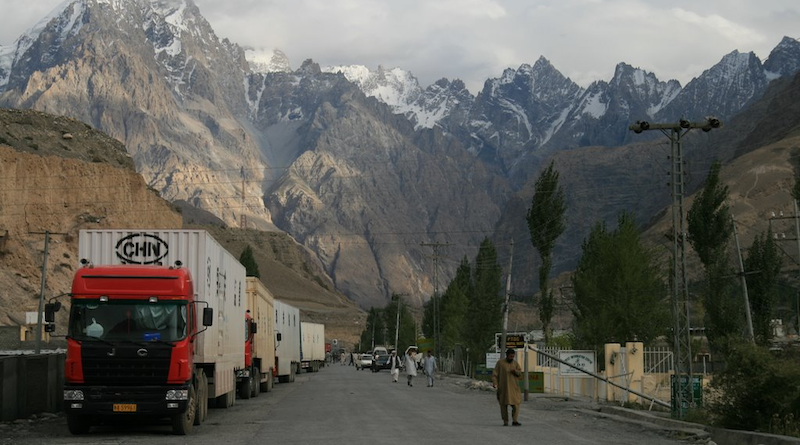
As stated clearly by Pakistani Ambassador to China, Moin Ul Haque, the China Pakistan Economic Corridor has withstood controversies, criticisms, censure and castigation to become a panacea for peace and stability within Pakistan and beyond.
In an interview with the Chinese press, Ambassador Moin further went on to state that power generation projects initiated by both Beijing and Islamabad have both enhanced Pakistan’s trade and also boosted Pakistan’s investor image. In an era where Pakistan continues to confront harrowing realities such as repayments of debt and low investor confidence, CPEC has emerged as an all-weather project which can stimulate growth and promote prosperity.
The optimism is backed by facts. CPEC projects have garnered $25 bn in direct investments which is a sign of remarkable progress given that a ‘1+4’ cooperation layout which includes the Gwadar Port, infrastructure, energy and industrial cooperation remains the pivotal four areas. In terms of job creation, CPEC is generating 192000 employment opportunities for skilled and semi-skilled professionals which can have a positive trickle-down effect on the local population. 6,000 megawatts of electricity and the construction of 510 kilometers of highways continues to be a work in progress as China seeks to ameliorate Pakistan’s economic woes.
These realities are precisely why the current government of the PML N is upbeat about Pakistan’s exit from an economic quagmire, which it blames on its predecessors. The recently concluded 10th anniversary is not just about celebrating Pakistan and China’s concerted efforts at building economic resilience but also marks a decade of significant achievements which includes contributions in exploring new opportunities such as agriculture, science and technology, telecommunications and the better social indicators for the local population. this concentration on human development is an underrated aspect of CPEC’s objective which continues to be implemented in letter and spirit.
Expediting the work of CPEC will remain the key to ensure that the benefits reaped from the corridor are not squandered. This is specifically true for Pakistan as the completion of numerous multi-million-dollar projects such as the Orange Line, power plants and massive transit systems have taken the country forward. It needs to be understood that Pakistan’s progress is tied with socio-economic upliftment which cannot be achieved in the absence of robust infrastructure to carry out the requisite deliverables. Tapping into various sectors such as mining, information technology, mineral resource exploitation and agriculture can only be achieved if the basic structure of development is in place.
For the macroeconomic framework of the BRI which seeks to develop the East West corridor connecting China with Eurasia, prioritization of Pakistan’s location as a strategic hub and ensure that Islamabad becomes a beacon of regional connectivity remains. This also includes manufacturing, agriculture and commerce which builds on Pakistan’s plans to move away from geosecurity to geo-economics for the well being of regional prosperity. CPEC as a corridor does not have a hint or iota of militarization despite what is portrayed inconveniently in the international media.
There is also the fact that industrial diversification can result in long term sustainable development which is precisely what countries such as Pakistan need. Examples can be drawn from South East Asia, where states such as Vietnam have been able to graduate from being a largely impoverished country to a state that can compete with other contemporaries in a region which is known for its dynamism. The production of sophisticated products can also propel Pakistan with its strong industrial potential and ability to enhance its global position in the international market.
The future for CPEC looks bright as it continues to yield dividends and promises much for Pakistan. The challenge will be to neutralize security threats such as the Balochistan insurgency for the progression of the corridor’s deliverables to be smooth. Pakistan has witnessed considerable negative coverage of its inability to economically resuscitate itself but China, as one of the largest economies in the world with impressive growth potential has invested in rectifying that image. The presence of special economic zones and knowledge corridors should not detract from the fact that CPEC is multidimensional and after its 10th anniversary that was recently concluded, it will only to be salient for the future of the country.
